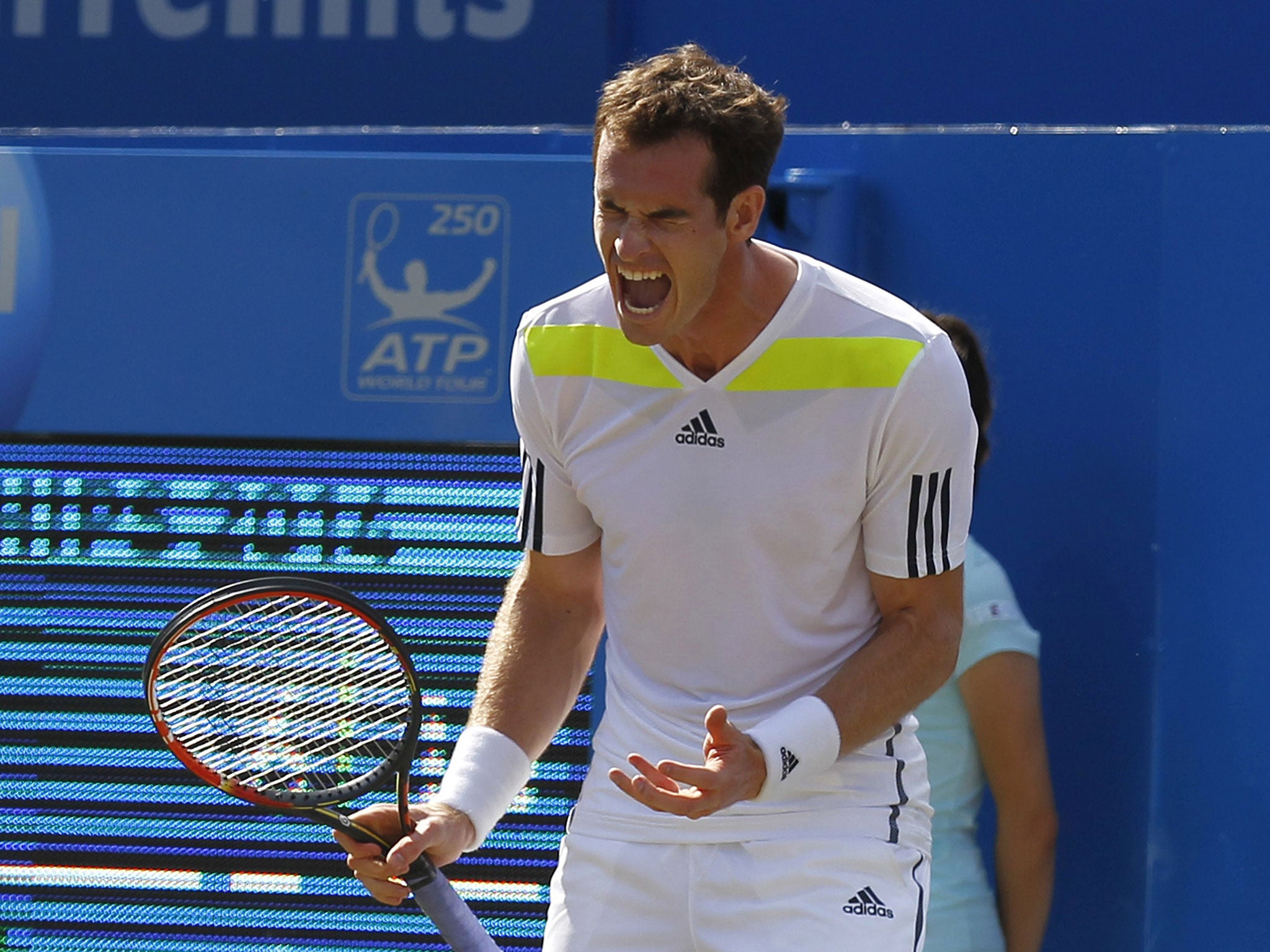Andy Murray and Rafael Nadal fall victim to transition problems after quick turnaround for grass
Scot goes down 7-6, 6-2 to Radek Stepanek at the Aegon Championships, while world No 1 loses 6-4, 6-1 to Dustin Brown in Halle

Your support helps us to tell the story
From reproductive rights to climate change to Big Tech, The Independent is on the ground when the story is developing. Whether it's investigating the financials of Elon Musk's pro-Trump PAC or producing our latest documentary, 'The A Word', which shines a light on the American women fighting for reproductive rights, we know how important it is to parse out the facts from the messaging.
At such a critical moment in US history, we need reporters on the ground. Your donation allows us to keep sending journalists to speak to both sides of the story.
The Independent is trusted by Americans across the entire political spectrum. And unlike many other quality news outlets, we choose not to lock Americans out of our reporting and analysis with paywalls. We believe quality journalism should be available to everyone, paid for by those who can afford it.
Your support makes all the difference.Roll on 2015. On a day when Andy Murray was beaten 7-6, 6-2 by Radek Stepanek here at the Aegon Championships and Rafael Nadal lost 6-4, 6-1 to Dustin Brown at the Halle tournament in Germany, the wisdom behind next year's move to a three-week gap between the French Open and Wimbledon could not have been more clearly underlined.
Twenty-four hours after claiming his first grass-court victory of the season, Murray saw his 19-match winning run on the surface ended by a wily opponent with a game well suited to the conditions. The result might have been very different if the Scot had converted one of the eight set points he had in the first set, but by the end it was an emphatic defeat.
For any players who go deep into the tournament at Roland Garros, where the final takes place just 15 days before the first balls are struck at the All England Club, the transition from clay to grass is one of the toughest challenges in tennis. When Murray won the title here 12 months ago and went on to end Britain's 77-year wait for a men's singles champion at Wimbledon, the fact that he had not played in Paris because of a back injury – and had instead spent more time getting accustomed to grass – was a significant factor.
This year Murray was playing in the semi-finals at the French Open only last Friday. He barely had time to dig out his grass-court shoes before he was on the practice court here, trying to adjust to the low bounces and the need to move more carefully around the court.
"A lot of people try to say that the surfaces are all very similar now, but from a player's perspective there is a huge difference between playing clay-court and grass-court tennis," Murray said. "The movement is totally different. In Rafa's case, two days of practice on grass after playing for six or seven weeks on one surface is not enough time to prepare properly for a tournament.
"I think the extra week [from next year] will help all of the players. They can prepare a bit better. The guys that lose early at the French can get more matches in and the guys that do well at the French can take a little break before getting back into it and getting their body used to the surface.
"I need to spend some time on this surface to get used to it. All of my best results on the grass came when I had a decent amount of preparation time. When I played my best tennis at the Olympics, that was seven or eight weeks I spent on the grass courts. I played my best tennis after that."
Stepanek, a 35-year-old Czech who was once No 8 in the world, was just the man to exploit Murray's rustiness. The world No 42 served well, volleyed confidently and denied Murray time by making frequent forays to the net. Nine years after the Scot, then the world No 312, announced his arrival on the world stage by beating Stepanek, then the world No 13, in the second round at Wimbledon, the Czech got his grass-court revenge.
Although Murray regularly struggled on his serve, he should still have won the tie-break, in which he led 6-2. Four of the eight set points were on his serve, but Stepanek hung on and took his chance to win the tie-break 12-10. The Czech broke in the opening game of the second set and Murray must have known it was not to be his day when a Stepanek return on break point at 2-4 hit the top of the net and dropped limply on the Scot's side.
Murray plans to take the next two days off before resuming training on Sunday, when he will return here for the "Rally for Bally" matches in memory of Elena Baltacha. He will spend next week on the practice court with his new coach, Amélie Mauresmo, before Wimbledon starts on Monday week. He will also play an exhibition match against Spain's Tommy Robredo at Hurlingham next Thursday.
Asked how he would spend the next two days, Murray said he would use the time relaxing with friends, going out to dinner and enjoying the World Cup. Might he find mowing his lawn a way to unwind? "Actually, I have never done that in my life," Murray smiled. "I wouldn't want to mess it up. The lawn wouldn't look great if I tried it."
Join our commenting forum
Join thought-provoking conversations, follow other Independent readers and see their replies
Comments